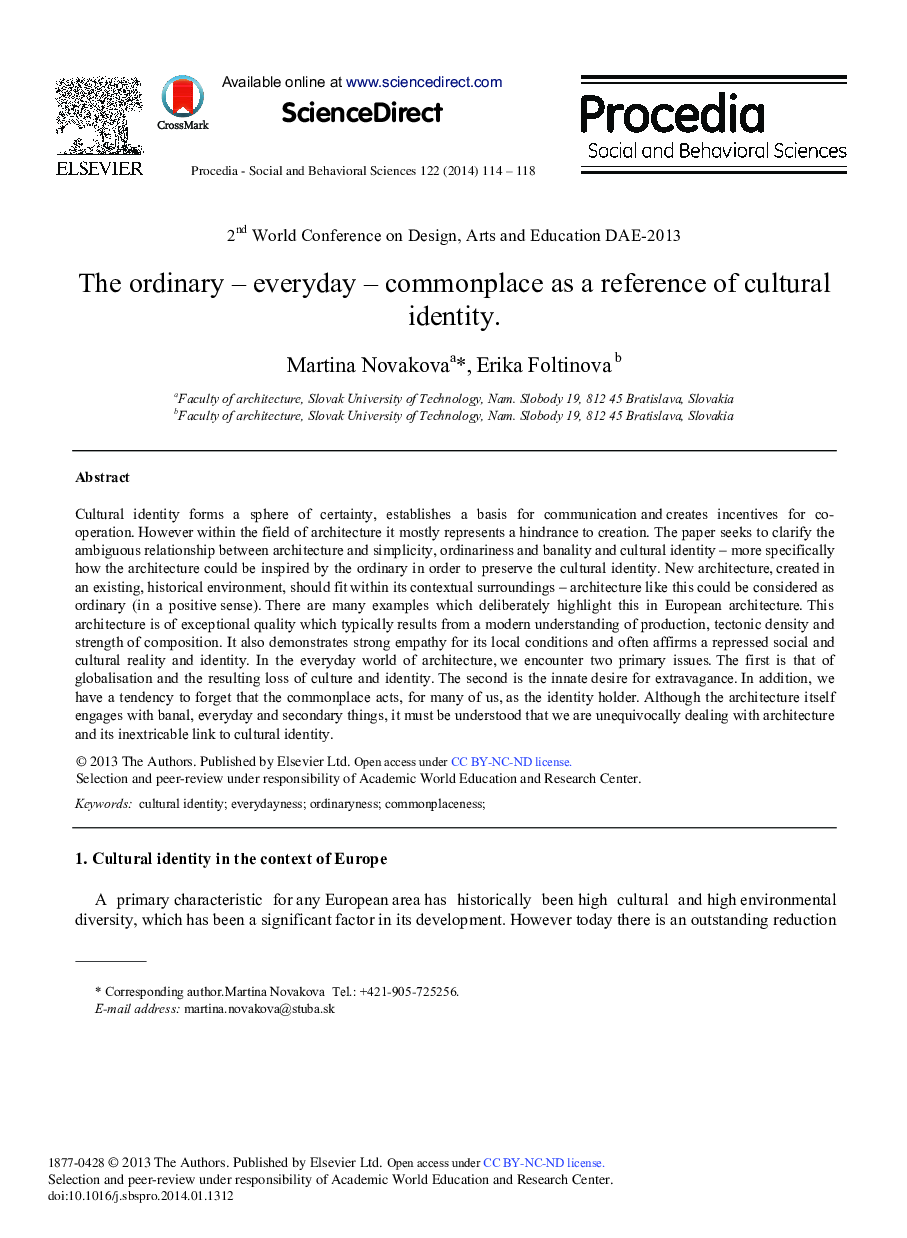| کد مقاله | کد نشریه | سال انتشار | مقاله انگلیسی | نسخه تمام متن |
|---|---|---|---|---|
| 1114870 | 1488437 | 2014 | 5 صفحه PDF | دانلود رایگان |
Cultural identity forms a sphere of certainty, establishes a basis for communication and creates incentives for co- operation. However within the field of architecture it mostly represents a hindrance to creation. The paper seeks to clarify the ambiguous relationship between architecture and simplicity, ordinariness and banality and cultural identity – more specifically how the architecture could be inspired by the ordinary in order to preserve the cultural identity. New architecture, created in an existing, historical environment, should fit within its contextual surroundings – architecture like this could be considered as ordinary (in a positive sense). There are many examples which deliberately highlight this in European architecture. This architecture is of exceptional quality which typically results from a modern understanding of production, tectonic density and strength of composition. It also demonstrates strong empathy for its local conditions and often affirms a repressed social and cultural reality and identity. In the everyday world of architecture, we encounter two primary issues. The first is that of globalisation and the resulting loss of culture and identity. The second is the innate desire for extravagance. In addition, we have a tendency to forget that the commonplace acts, for many of us, as the identity holder. Although the architecture itself engages with banal, everyday and secondary things, it must be understood that we are unequivocally dealing with architecture and its inextricable link to cultural identity.
Journal: Procedia - Social and Behavioral Sciences - Volume 122, 19 March 2014, Pages 114-118
